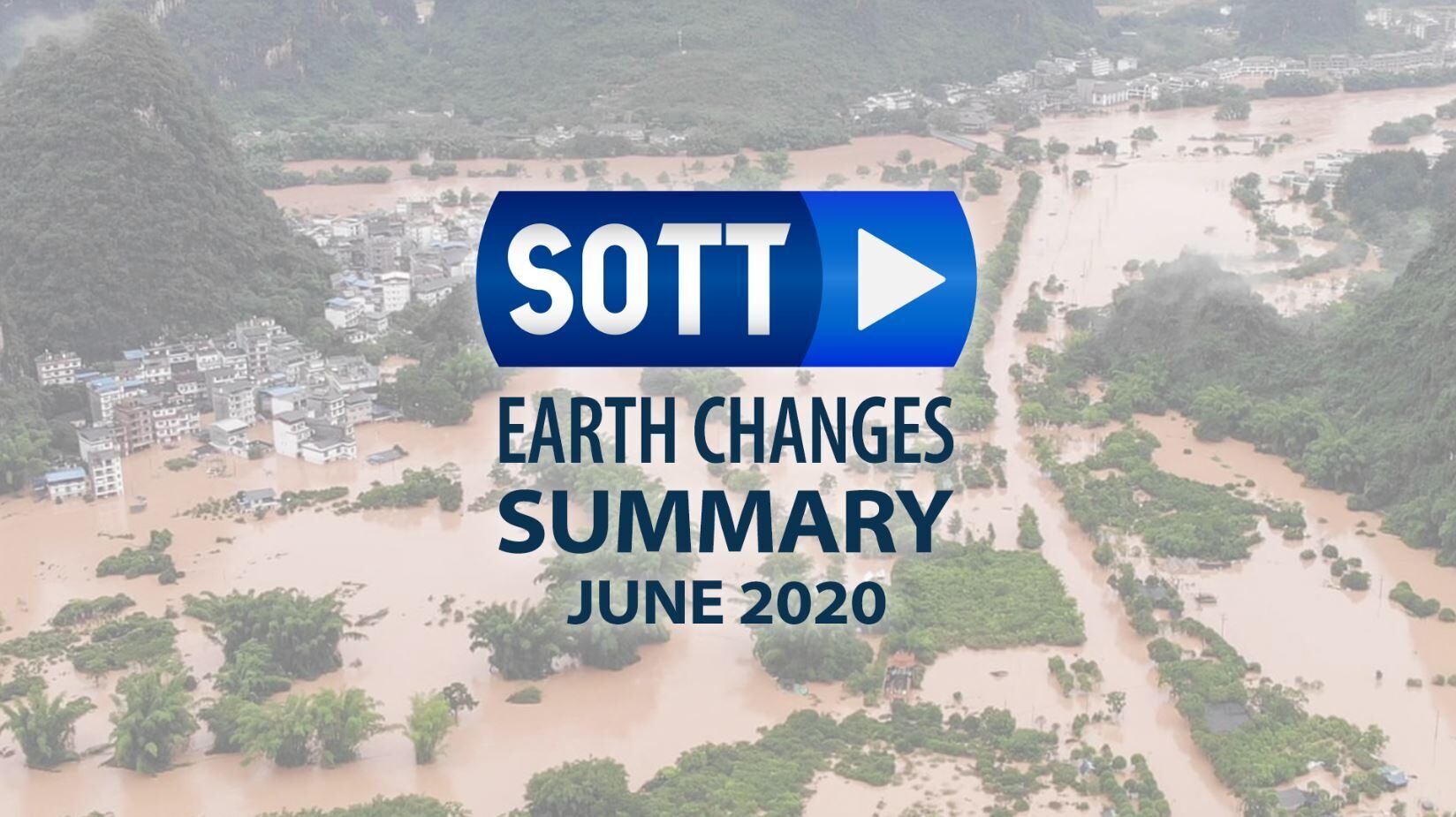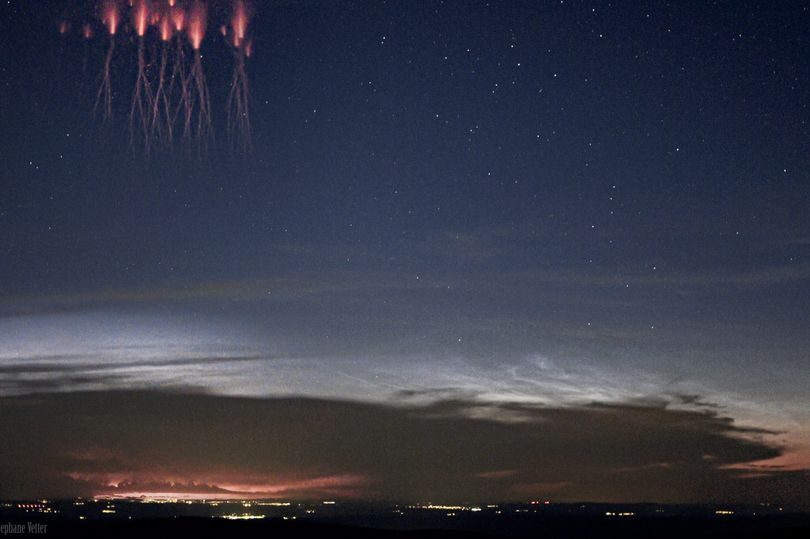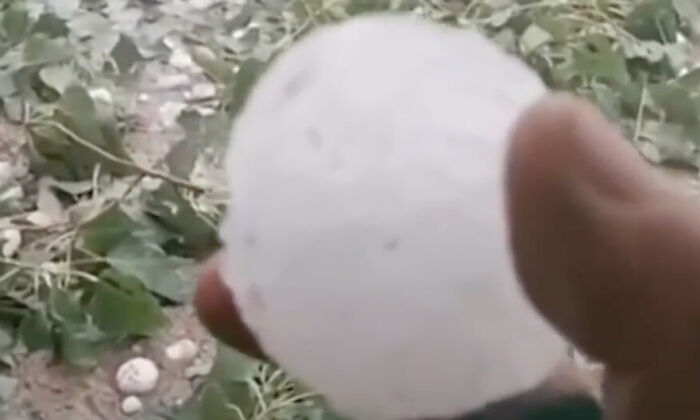The raw data speaks for itself -- the United States was hotter in the past. "They" can fudge the charts, but they can't alter the record books.

electroverse.net
HIGHEST U.S. TEMPERATURES ON RECORD BY STATE
JULY 12, 2020 CAP ALLON
Historical documentation destroys the man-made global warming theory.
While those in control of the temperature graphs are all too happy to fraudulently increase the running average, what they haven’t (yet) had the balls to do is rewrite the history books.
As Tony Heller uncovers on his site
realclimatescience, NASA routinely cools the past and heats the present, so to give the illusion of a greater warming trend. Comparisons between old and new graphs instantly reveals this fraud:
In 1999, NASA’s James Hansen reported 0.5C US cooling since the 1930’s:

By 2016, the same NASA graph has eliminated that 1930-1999 cooling:

This is fraud. Plain and simple.
But as touched-on above, what those grubby little warm-mongers haven’t yet “altered” is the historical weather record books.
Below I’ve listed the highest temperature on record by U.S. State, according to NOAA. If CO2-induced global warming is real then surely most of the records will have been set over the past few years, or at least since the turn of the new millennium, in line with increasing carbon dioxide emissions, right…?
Let’s see…
ALABAMA
The hottest day ever recorded in Alabama was the
112F (44.4C) back on September 6,
1925, in Centreville (about 50 miles south of Birmingham).
ALASKA
June 27,
1915 saw
100F (37.8C) engulf Fort Yukon, located north of the Arctic Circle.
ARIZONA
128F (53.3C) hit Lake Havasu City, located on the western edge of Arizona, on June 29,
1994.
ARKANSAS
Ozark, located along the Arkansas River, recorded
120F (48.9C) on August 10,
1936.
CALIFORNIA
Back on July 10,
1913, Greenland Ranch, now Furnace Creek Ranch, in California’s Death Valley peaked at a scalding
134F (56.7C) — a temp that to this day remains the United States’ hottest on record.
COLORADO
Colorado reached
114F (45.6F) twice — once on July 1,
1933, in Las Animas, and again in Sedgwick on July 11,
1954.
CONNECTICUT
Connecticut has touched
106F (41.1C) twice — in August,
1916 in Torrington, and in July,
1995 in Danbury.
DELAWARE
Millsboro hit a high of
110F (43.3C) on July 21,
1930.
FLORIDA
On June 29,
1931, Monticello in Northern Florida reached
109F (42.8C).
GEORGIA
Georgia’s witnessed
112F (44.4C) twice — once in Greenville in August of
1983, and once in Louisville in July
1952.
HAWAII
The highest temp in Hawaii is the
100F (37.8C) in Pahala in April,
1931.
IDAHO
Idaho reached
118F (47.8C) on July 28,
1934, in Orofino.
ILLINOIS
Eastern St. Louis touched
117F (47.2F) on July 14,
1954.
INDIANA
116F (46.7C) was registered on July 14,
1936, in St. Joseph County.
IOWA
The hottest temperature ever recorded in Iowa was in Keokuk — the
118F (47.8C) set back on July 20,
1934.
KANSAS
Kansas has hit
121F (49.4C) twice, both times in
1936 — on July 18 in Fredonia, and six days later in Alton.
KENTUCKY
Greensburg hit
114F (45.6C) on July 28,
1930.
LOUISIANA
Louisiana’s hottest day was August 10,
1936 — Plain Dealing reached
114F (45.6C).
MAINE
North Bridgton hit
105F (40.6C) twice in the same week — first, Independence Day in
1911, and then 6 days later.
MARYLAND
Maryland has seen 109F on four separate occasions — twice in August
1918 in Cumberland, once in Frederick in July
1936, and once way back on July 3,
1898, in Boettcherville.
MASSACHUSETTS
Chester touched
107F (41.7C) on August 2,
1975.
MICHIGAN
Stanwood was hit by a toasty
112F (44.4F) on July 13,
1936.
MINNESOTA
115F (46.1C) scorched Beardsley in western Minnesota on July 29,
1917.
MISSISSIPPI
On July 29,
1930, Holly Springs also reached
115F (46.1F).
MISSOURI
Warsaw was hit by an all-time high of
118F (47.8C) on July 14,
1954.
MONTANA
117F (47.2C) was hit on two occasions in Montana — once in Glendive in July
1983, and once near Medicine Lake in July
1937.
NEBRASKA
Three places in Nebraska have hit
118F (47.8C) — Geneva on July 15,
1934, and both Hartington and Minden during the same week in July
1936.
NEVADA
Laughlin, Nevada saw
125F (51.7C) on June 29,
1994.
NEW HAMPSHIRE
On Independence Day in
1911, Nashua reached
106F (41.1C).
NEW JERSEY
Old Bridge hit
110F (43.3C) on July 10,
1936.
NEW MEXICO
The Waste Isolation Pilot Plant recorded the hottest day in New Mexico’s history — the
122F (50C) on June 27,
1994.
NEW YORK
Troy reached
108F (42.2C) on July 22,
1926.
NORTH CAROLINA
Fayetteville topped-out at
110F (43.3C) on August 21,
1983.
NORTH DAKOTA
Steele reached a scorching
121F (49.4C) on July 6,
1936.
OHIO
Gallipolis, located on the Ohio River, reached
113F (45C) on July 21,
1934.
OKLAHOMA
120F (48.9C) has been reached four times Oklahoma, all in the year
1936 — once in Poteau, twice in Altus, and once in Alva.
OREGON
1898 is the record-holder for Oregon. The mercury hit
119F (48.3C) twice that year— in Prineville, and in downtown Pendleton.
PENNSYLVANIA
For two days in a row, July 9 and 10,
1936, Phoenixville hit
111F (43.9C).
RHODE ISLAND
Providence hit
104F (40C) on August 2,
1975.
SOUTH CAROLINA
The South Carolina capitol reached
113F (45C) on June 29,
2012.
SOUTH DAKOTA
SD has hit
120F (48.9C) twice — once on July 5,
1936 in Gann Valley, and again on July 15,
2006 in Fort Pierre.
TENNESSEE
Perryville on the Tennesee River hit
113F (45C) twice in
1930.
TEXAS
The lone star state has touched
120F (48.9C) twice — once on August 12,
1936, in Seymour, and once on June 28,
1994, in Monahans.
UTAH
St. George hit
115F (46.1C) on July 5,
1985.
VERMONT
The town of Vernon reached
107F (41.7C) on July 7,
1912.
VIRGINIA
Virginia has hit
100F (37.8C) three times — twice in the first week of July
1900 in Columbia, and once on July 15,
1954, in Balcony Falls, Glasgow.
WASHINGTON
Washington State has reached
118F (47.8C) twice —once on Ice Harbor Dam near Ash on August 5,
1961, and once in Wahluke on July 24,
1928.
WEST VIRGINIA
West Virginia hit an all-time high of
112F (44.4C) on two occasions — in Moorefield on August 4,
1930 and in Martinsburg on July 10,
1936.
WISCONSIN
Wisconsin Dells on the Wisconsin River hit a high of
114F (45.6C) on July 13,
1936.
WYOMING
115F (46.1C) was reached twice in Wyoming, once in Basin on August 8,
1983 and once on the Diversion Dam by Wind River Reservation on July 15,
1988.
This raw data speaks for itself —
the United States was hotter in the past.
According to NOAA’s own data, of the 50 U.S. state all-time record high temperatures, 23 were set during the 1930s, while 36 occurred prior to 1960.
They can’t alter the record books.
Anthropogenic global warming is a lie.
Perversely, a bout of
GLOBAL COOLING will likely be Earth’s next temperature swing, one arriving in line with
historically low solar activity,
cloud-nucleating Cosmic Rays, and a
meridional jet stream flow.
Even NASA appear to agree,
if you read between the lines, with their forecast for this upcoming solar cycle
(25) seeing it as “
the weakest of the past 200 years,” with the agency correlating previous solar shutdowns to prolonged periods of global cooling
here.

 Prepare accordingly
Prepare accordingly —
learn the facts, relocate if need be, and grow your own.













































